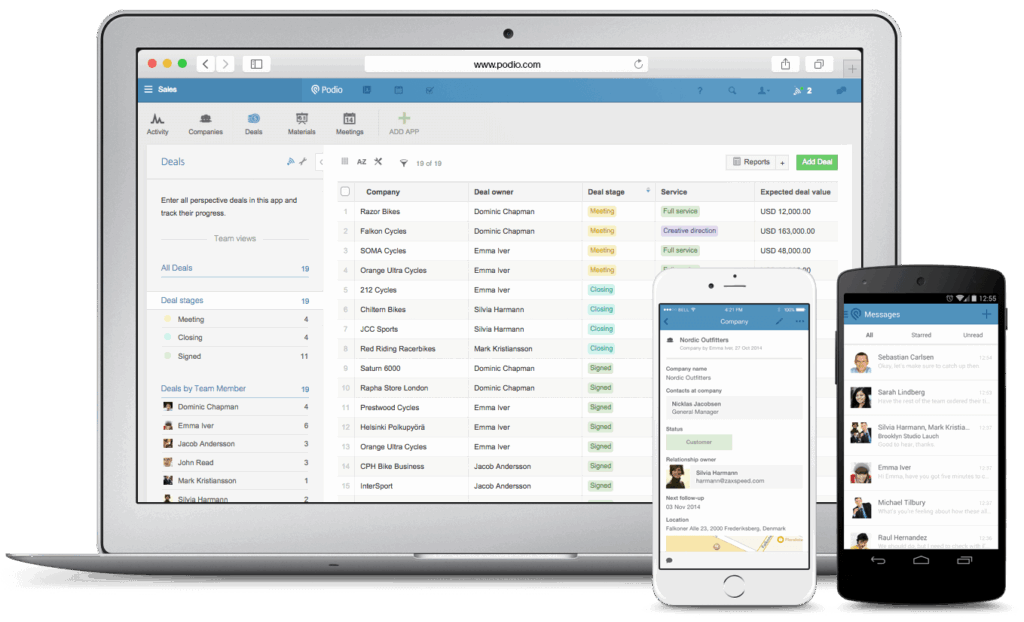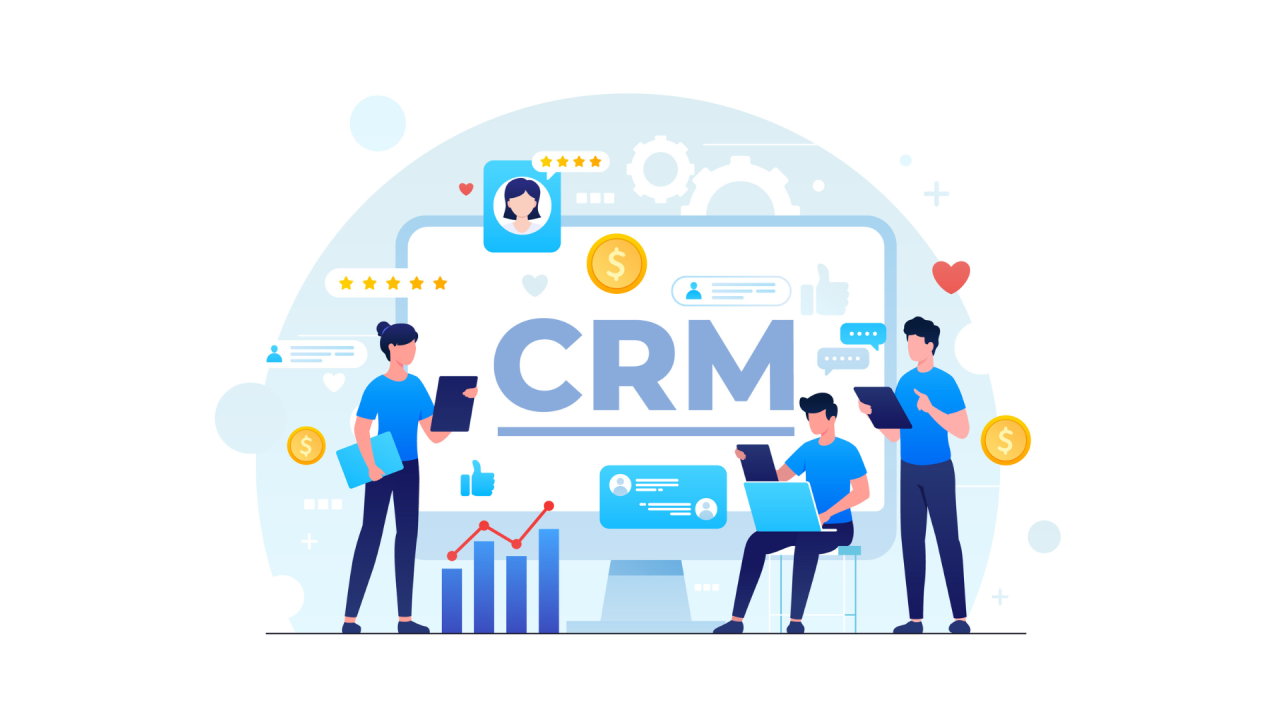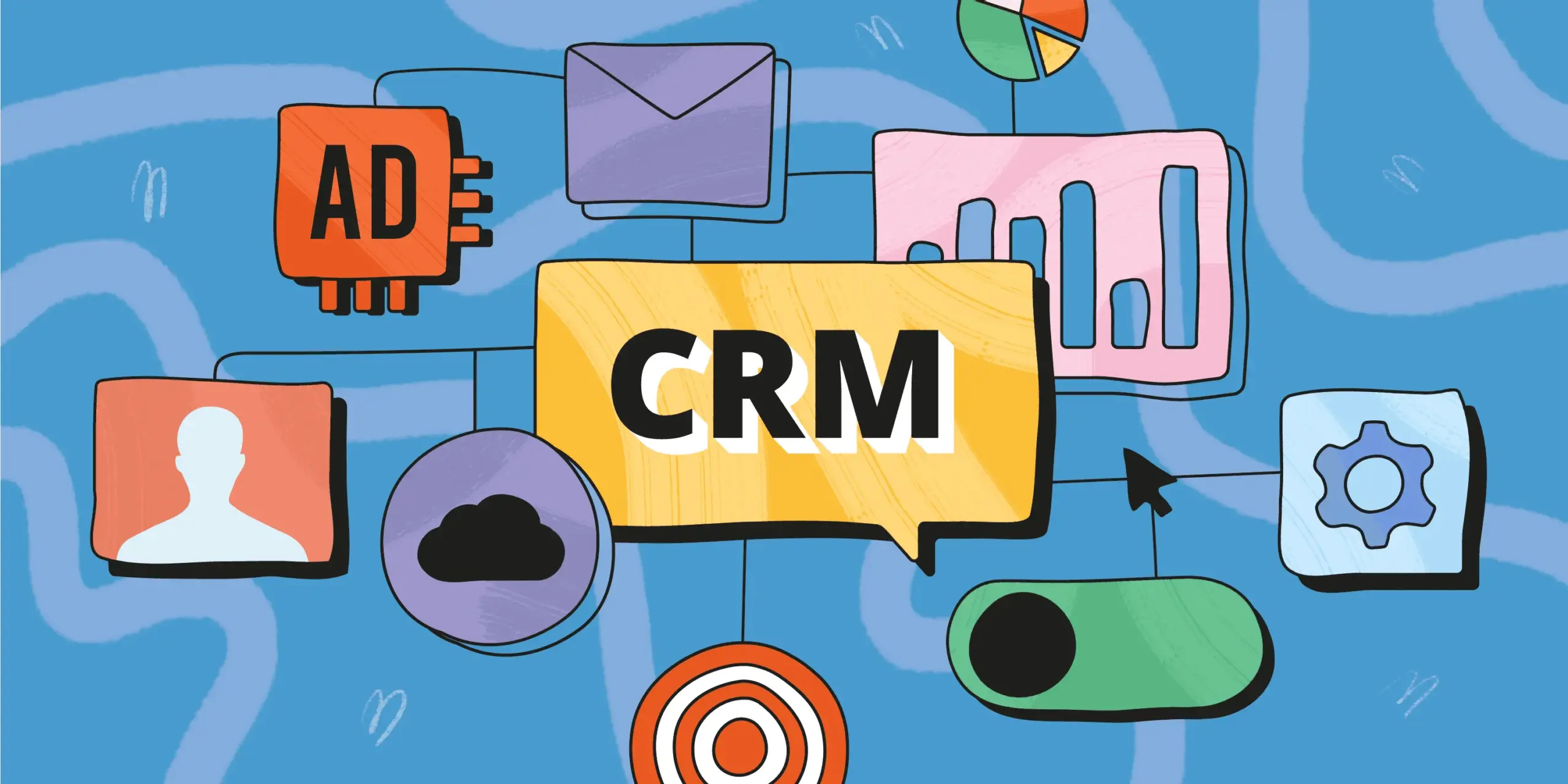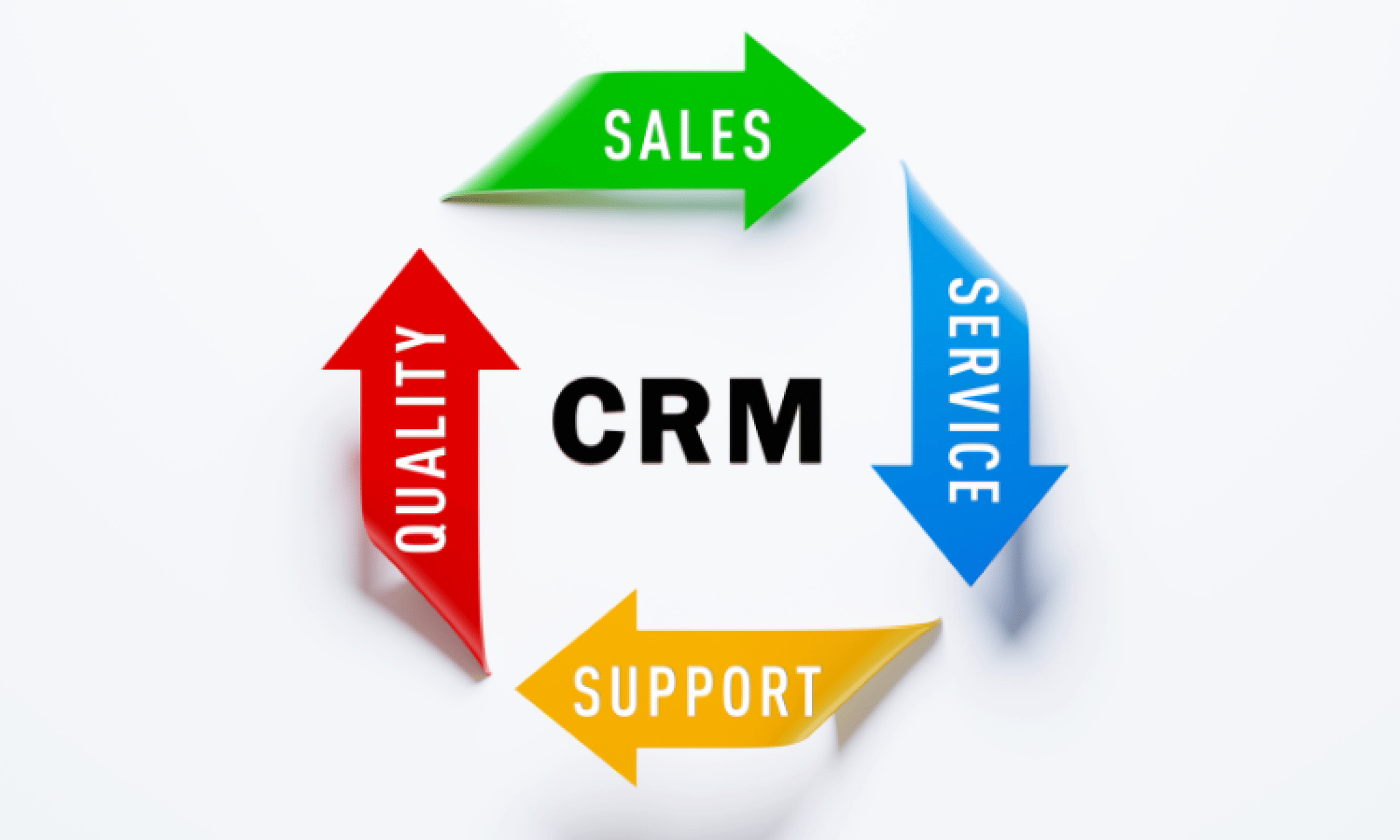Unlock Growth: Your Ultimate Guide to Small Business CRM Setup

Introduction: Why Your Small Business Needs a CRM
In today’s competitive landscape, small businesses are constantly striving to gain an edge. One of the most powerful tools available is a Customer Relationship Management (CRM) system. But what exactly is a CRM, and why is it so crucial for your business? A CRM is essentially a centralized platform for managing all your interactions with current and potential customers. Think of it as your business’s memory, keeping track of every conversation, every deal, and every customer preference.
For small businesses, a CRM offers unparalleled benefits. It helps you:
- Improve Customer Relationships: By centralizing customer data, you can personalize interactions and build stronger relationships.
- Boost Sales: CRM systems streamline the sales process, helping you track leads, manage opportunities, and close deals more efficiently.
- Enhance Marketing Efforts: CRM data provides valuable insights into customer behavior, allowing you to create targeted marketing campaigns.
- Increase Efficiency: Automating tasks like email marketing and appointment scheduling frees up your time to focus on core business activities.
- Make Data-Driven Decisions: CRM systems provide valuable reports and analytics, enabling you to make informed decisions about your business.
Setting up a CRM might seem daunting, but with the right approach, it can be a game-changer for your small business. This comprehensive guide will walk you through the entire process, from choosing the right CRM to implementing it effectively.
Choosing the Right CRM for Your Small Business
The market is flooded with CRM options, each with its own set of features and pricing plans. Choosing the right one is crucial for your success. Here’s how to narrow down your choices:
1. Assess Your Needs
Before you start comparing CRM systems, take some time to assess your business needs. Consider the following questions:
- What are your primary goals for a CRM? Are you primarily focused on sales, marketing, customer service, or a combination of these?
- What are your current pain points? What challenges are you facing in managing customer relationships, tracking leads, or closing deals?
- What features do you need? Do you need features like contact management, sales pipeline management, email marketing integration, or reporting and analytics?
- How many users will need access to the CRM? This will impact the pricing and scalability of the system.
- What is your budget? CRM systems range in price from free to thousands of dollars per month.
Answering these questions will help you create a list of essential features and prioritize your needs.
2. Research CRM Providers
Once you have a clear understanding of your needs, it’s time to research CRM providers. Here are some popular options for small businesses:
- HubSpot CRM: A free CRM with powerful features for sales, marketing, and customer service. It’s known for its user-friendliness and ease of use.
- Zoho CRM: A comprehensive CRM with a wide range of features and affordable pricing plans. It’s a good option for businesses that need a lot of customization.
- Salesforce Sales Cloud: A robust CRM that is popular with larger businesses, but it can be expensive and complex for smaller businesses.
- Pipedrive: A sales-focused CRM that is known for its visual pipeline and ease of use.
- Freshsales: A sales CRM that offers features like built-in phone and email integration.
Read reviews from other small businesses to get an idea of the strengths and weaknesses of each provider.
3. Consider Key Features
When evaluating CRM providers, pay close attention to the following features:
- Contact Management: The ability to store and organize customer information, including contact details, interactions, and purchase history.
- Sales Pipeline Management: Tools for tracking leads, managing opportunities, and moving deals through your sales pipeline.
- Email Marketing Integration: The ability to send and track email campaigns directly from the CRM.
- Reporting and Analytics: Features for generating reports and analyzing data to track your progress and make informed decisions.
- Automation: Tools for automating tasks like email marketing, appointment scheduling, and lead nurturing.
- Integrations: The ability to integrate with other tools you use, such as your website, email provider, and accounting software.
- Mobile Accessibility: Access to your CRM data and features on the go.
- Ease of Use: A user-friendly interface that is easy for your team to learn and use.
- Customer Support: Reliable customer support to assist you with any issues or questions.
4. Free vs. Paid CRM
Many CRM providers offer free versions of their software. While free CRM systems can be a great starting point, they often have limitations, such as a limited number of users, storage space, or features. Paid CRM systems offer more advanced features and scalability, but they come with a monthly or annual subscription fee. Consider your business’s needs and budget when deciding between a free and paid CRM.
5. Demo and Trial
Before making a final decision, it’s highly recommended that you request a demo or sign up for a free trial of the CRM systems you’re considering. This will allow you to test the software, explore its features, and see if it’s a good fit for your business. During the demo or trial, pay attention to the user interface, ease of use, and the availability of customer support.
Step-by-Step Guide to Setting Up Your CRM
Once you’ve chosen the right CRM for your business, it’s time to set it up. Here’s a step-by-step guide to help you get started:
1. Create an Account and Configure Basic Settings
The first step is to create an account with your chosen CRM provider. This typically involves providing your business information and setting up a username and password. After creating your account, you’ll need to configure some basic settings, such as:
- Company Information: Enter your company name, address, and other relevant details.
- User Accounts: Create user accounts for each member of your team who will be using the CRM. Assign appropriate roles and permissions to each user.
- Currency and Time Zone: Set your preferred currency and time zone.
- Data Privacy Settings: Configure your data privacy settings to comply with relevant regulations, such as GDPR or CCPA.
2. Import Your Data
Next, you’ll need to import your existing customer data into the CRM. This typically involves importing data from spreadsheets, email contact lists, or other sources. Most CRM systems allow you to import data in CSV or Excel format. Be sure to:
- Clean Your Data: Before importing, clean your data to remove duplicates, correct errors, and ensure that all fields are properly formatted.
- Map Your Fields: Map the fields in your existing data to the corresponding fields in your CRM.
- Test the Import: Before importing all your data, test the import with a small sample to ensure that the data is imported correctly.
3. Customize Your CRM
One of the key benefits of a CRM is its ability to be customized to fit your specific business needs. Take the time to customize your CRM by:
- Creating Custom Fields: Add custom fields to store information that is specific to your business, such as industry, product interest, or deal size.
- Customizing the Sales Pipeline: Customize your sales pipeline to match your sales process. Define stages and activities for each stage.
- Setting Up Workflows and Automation: Automate repetitive tasks, such as sending follow-up emails or updating deal statuses.
- Integrating with Other Tools: Integrate your CRM with other tools you use, such as your website, email provider, and accounting software.
4. Train Your Team
Training your team is essential for the successful implementation of your CRM. Provide your team with comprehensive training on how to use the CRM, including how to:
- Enter and update customer information.
- Manage leads and opportunities.
- Track sales activities.
- Use email marketing features.
- Generate reports.
Consider creating training manuals, videos, or holding in-person training sessions. Ensure your team is comfortable with the system and understands how to use it effectively.
5. Test and Refine
After setting up your CRM and training your team, it’s important to test the system and refine your setup. Ask your team for feedback and make adjustments as needed. Regularly review your CRM data and reports to identify areas for improvement. Consider:
- Monitoring user activity.
- Reviewing data accuracy.
- Adjusting workflows and automation.
- Adding or removing custom fields.
The setup process is not a one-time event. You’ll likely need to adjust your CRM over time as your business grows and your needs evolve.
Maximizing Your CRM’s Potential: Best Practices
Once your CRM is set up, it’s time to start using it to its full potential. Here are some best practices to help you maximize your CRM’s effectiveness:
1. Data Entry and Management
Accurate and up-to-date data is the foundation of a successful CRM. Make sure to:
- Enter data consistently and accurately.
- Update customer information regularly.
- Clean your data regularly to remove duplicates and correct errors.
- Establish data entry guidelines for your team.
2. Sales Pipeline Management
Effectively managing your sales pipeline is crucial for closing deals. Use your CRM to:
- Track leads and opportunities throughout the sales process.
- Define clear stages and activities for each stage of the pipeline.
- Set up automated tasks and reminders to keep deals moving forward.
- Analyze your sales pipeline to identify bottlenecks and areas for improvement.
3. Email Marketing and Communication
Use your CRM to streamline your email marketing and communication efforts. This includes:
- Segmenting your audience.
- Creating targeted email campaigns.
- Automating email sequences.
- Tracking email open rates, click-through rates, and conversions.
4. Reporting and Analytics
Use your CRM’s reporting and analytics features to gain insights into your business performance. This includes:
- Tracking key metrics, such as sales revenue, customer acquisition cost, and customer lifetime value.
- Generating reports on sales performance, marketing effectiveness, and customer satisfaction.
- Using data to make informed decisions about your business.
5. Integration and Automation
Leverage the power of integration and automation to streamline your workflows and increase efficiency. This means:
- Integrating your CRM with other tools, such as your website, email provider, and accounting software.
- Automating repetitive tasks, such as sending follow-up emails, scheduling appointments, and updating deal statuses.
6. User Adoption and Training
Ensure that your team is using the CRM effectively by:
- Providing ongoing training and support.
- Encouraging user feedback and suggestions.
- Recognizing and rewarding CRM usage.
Common Challenges and How to Overcome Them
Setting up and using a CRM can present some challenges. Here’s how to overcome some of the most common obstacles:
1. Data Migration
Migrating data from existing systems can be time-consuming and complex. To overcome this challenge:
- Plan your data migration carefully.
- Clean your data before importing it into the CRM.
- Test the import with a small sample of data.
- Consider hiring a consultant to assist with the data migration.
2. User Adoption
Getting your team to adopt the CRM can be a challenge. To improve user adoption:
- Provide comprehensive training.
- Highlight the benefits of using the CRM.
- Make the CRM easy to use.
- Encourage user feedback and suggestions.
- Recognize and reward CRM usage.
3. Data Accuracy
Inaccurate data can undermine the effectiveness of your CRM. To ensure data accuracy:
- Establish data entry guidelines.
- Provide ongoing training on data entry best practices.
- Regularly review and clean your data.
- Use data validation rules to prevent errors.
4. Integration Issues
Integrating your CRM with other tools can sometimes present technical challenges. To overcome integration issues:
- Choose a CRM that integrates well with the tools you use.
- Follow the instructions provided by the CRM provider and the other tools.
- Test the integration thoroughly.
- Seek help from the CRM provider or a consultant if needed.
5. Lack of Customization
Some CRM systems may not offer the level of customization you need. To address this:
- Choose a CRM that offers the features and customization options you require.
- Consider using a CRM that allows you to integrate with third-party apps.
- If necessary, hire a consultant to customize the CRM to meet your specific needs.
Conclusion: The Future of Your Business with a CRM
Implementing a CRM system is a significant step towards transforming your small business. It’s not just about managing contacts; it’s about building stronger customer relationships, streamlining your sales process, and making data-driven decisions. By following the steps outlined in this guide, you can successfully set up and utilize a CRM to unlock growth and achieve your business goals.
Remember, the key to success is to choose the right CRM for your needs, customize it to fit your business, train your team, and consistently use the system to manage your customer relationships. With the right CRM in place, you’ll be well-equipped to navigate the competitive landscape and thrive in the years to come. Embrace the power of customer relationship management, and watch your small business flourish!





